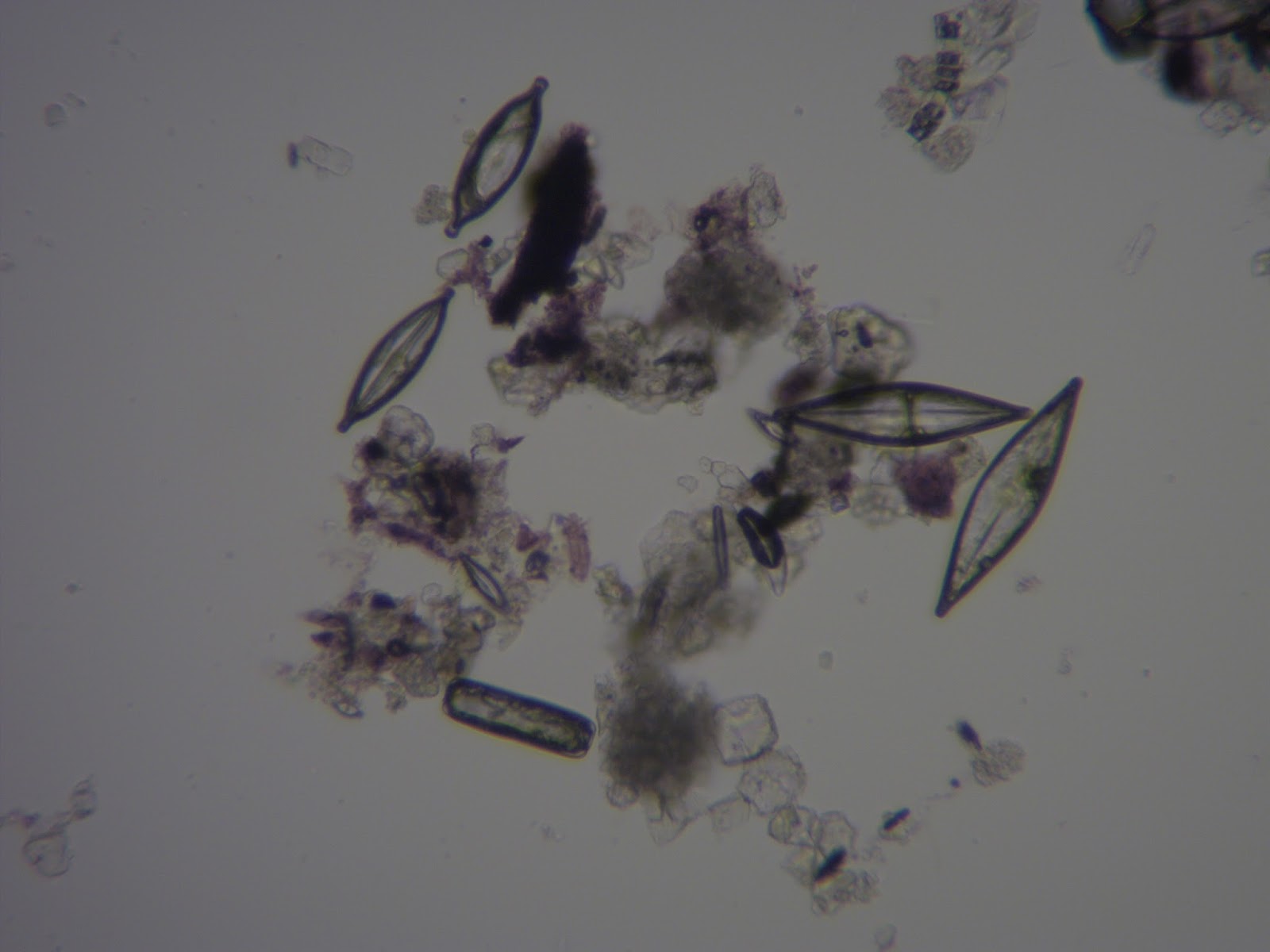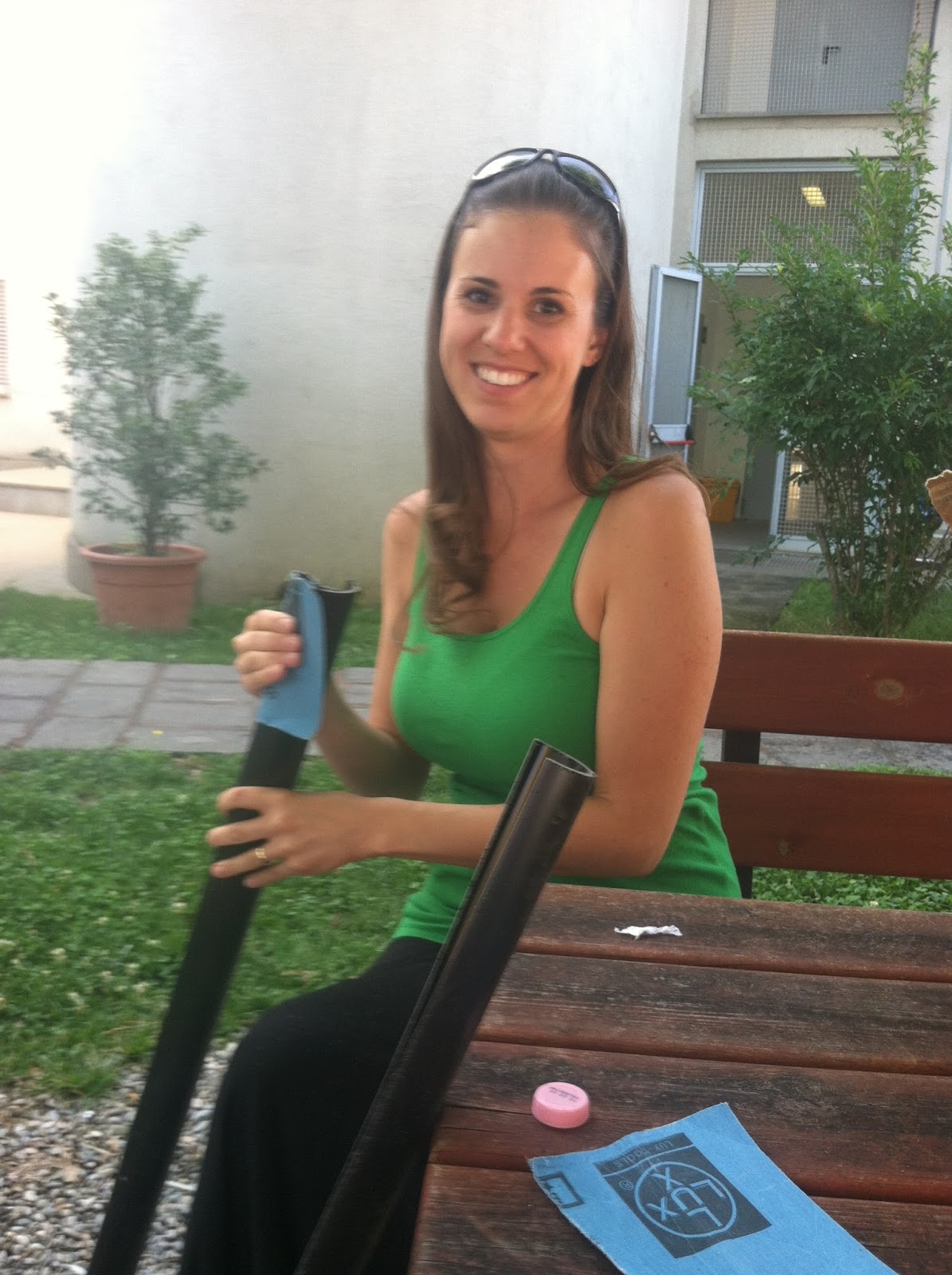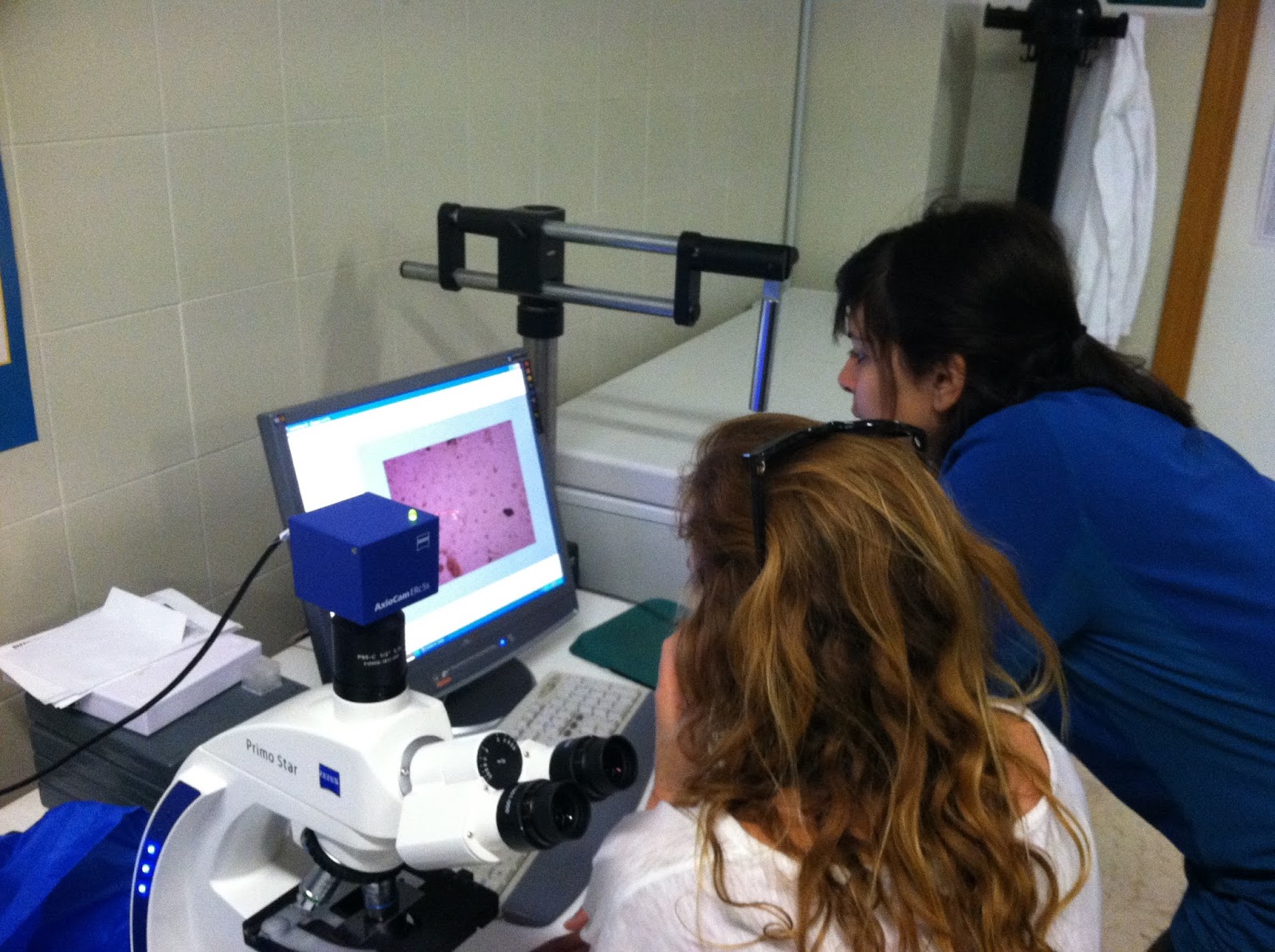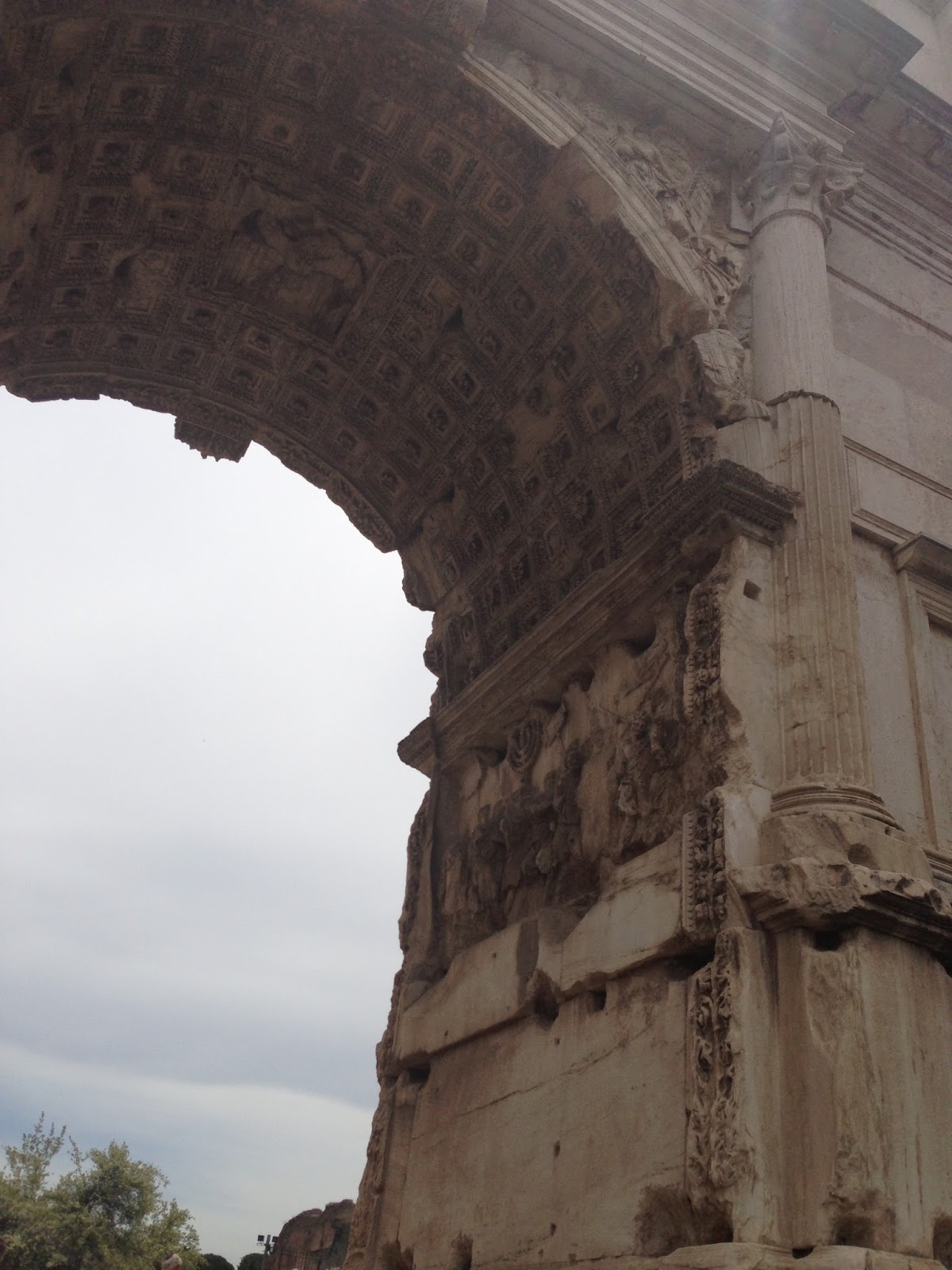 |
| Etruscan Territory, image from Wikipedia |
I know that was all choppy, so let me bring it back to my initial topic: The Etruscans. On one of our first days here Lexy and I wandered into a courtyard where Paula told us the “benches” were actually sarcophagi from Etruscan tombs. The Etruscans were the people here before the Romans. All around Viterbo are artifacts of the original inhabitants. Huge stone sculptures the Etruscans carved from nenfro, a volcanic rock the Etruscans favored for sculpture still dot the area. For example in the Palazzo del Podesta there is an Etruscan nenfro lion sculpture still looking down on the piazza from atop a column the Romans built.
Italy’s history is just a crazy patchwork of constant war with territory changing hands between groups at regular intervals. The Etruscans gave way to the Romans, then the Goths, Byzantines, Franks and Papal States, among others, controlled the area at one time. I realize history books don’t include lengthy chapters on peace time, but it still seems a bit crazy.
The origin of the Etruscans is still up in the air. I read that they may have come from Lydia in Asia Minor as described by Herodotus in the 5th Century BC. Herodotus describes a city that was plagued with famine for 18 years. The king then decided that something needed to be done, since nothing was getting better. He divided the population into two, he stayed with half the population in their city, then sent his son, Tyrrhenian with the second half to migrate which is how they may have arrived in Italy. Not all of Herodotus’s accounts have been verified so this story may not be accurate. Other people feel that the Etruscans may have been indigenous to the area, however there are some problems with that idea as well. Etruscan pottery and artwork found in Italy are similar to those found in Asia Minor. This may be because the Estruscans originated there or from trading with the native peoples. The Etruscan language predated and influenced Latin, in fact Rōma the Latin word for the capital city, Rome, could have came directly from the Estruscan Ruma (that is if the Romulus and Remus story is incorrect!).
Recently DNA testing has been used to try to find the origins of the Etruscans and they’ve had some interesting results. The Etruscans have no DNA similarities to northern European people. There are however some mitochondrial DNA similarities to the inhabitants of Asia Minor which supports Herodotus’s writings. (On a side note for you non-bio people, you always get your mitochondria from you mother. It contains it’s own DNA, so since it’s never shuffled with any other DNA it remains pretty pure with the exception of rare mutations. Because of this, a woman can trace her lineage back however far she has the mitochondrial DNA for. Just like a man can trace his through his Y chromosome on the male side).
The origin of the Etruscans is still up in the air. I read that they may have come from Lydia in Asia Minor as described by Herodotus in the 5th Century BC. Herodotus describes a city that was plagued with famine for 18 years. The king then decided that something needed to be done, since nothing was getting better. He divided the population into two, he stayed with half the population in their city, then sent his son, Tyrrhenian with the second half to migrate which is how they may have arrived in Italy. Not all of Herodotus’s accounts have been verified so this story may not be accurate. Other people feel that the Etruscans may have been indigenous to the area, however there are some problems with that idea as well. Etruscan pottery and artwork found in Italy are similar to those found in Asia Minor. This may be because the Estruscans originated there or from trading with the native peoples. The Etruscan language predated and influenced Latin, in fact Rōma the Latin word for the capital city, Rome, could have came directly from the Estruscan Ruma (that is if the Romulus and Remus story is incorrect!).
Recently DNA testing has been used to try to find the origins of the Etruscans and they’ve had some interesting results. The Etruscans have no DNA similarities to northern European people. There are however some mitochondrial DNA similarities to the inhabitants of Asia Minor which supports Herodotus’s writings. (On a side note for you non-bio people, you always get your mitochondria from you mother. It contains it’s own DNA, so since it’s never shuffled with any other DNA it remains pretty pure with the exception of rare mutations. Because of this, a woman can trace her lineage back however far she has the mitochondrial DNA for. Just like a man can trace his through his Y chromosome on the male side).
The Etruscans were miners, mostly copper and iron, which helped enrich their people so they were able to expand to the southern peninsula of Italy. They eventually allied themselves with the Carthaginians against the Greeks in the 6th century BC when the Greeks started creating colonies around the Italian peninsula and dominating trade in Italy. Previous to this the Greeks held trading posts in Africa, and Sicily, starting their monopoly on trade. They new colonies in Corsica, Sardinia and Iberia finally causing the tension to erupt. The B
attle of Alalia (540 BC) caused a shift of power between the Greeks and the Carthaginians. The Etruscans were defeated by the Greeks, causing the Etruscans to lose their southern provinces. This marked the beginning of their decline. In 474 BC the Etruscans tried to regain their southern provinces, but were defeated in the Battle of Cumae. This was another naval battle, between the allied Syracuse and Cumae troops and the Etruscans. The Etruscans lost much of their influence in Italy, and after a few more losses on the battle field they were officially conquered by the Romans in the 3rd century BC.
 |
| Battle of Alalia, image from Wikipedia |
Not much of the original Etruscan Viterbo remains. When the Romans first invaded and dominated Southern Etruria the Etruscans resisted. Viterbo is located in a very strategic location for travel by way of Via Cassia, a main road through Italy made by the Romans after their conquest. So basically there are some artifacts, but not much else. The Etruscans remain a mysterious people to this day. Next weekend Lexy and I want to go to Civita di Bagnoregio, which is also an old Etruscan city. Earthquakes have caused much of the town to fall down the cliffs and today the population is a staggering 15. It’s known as il paese che muore, or “the dying town.” You have to travel across a long bridge to get to the city. So excited about that!
Oh my gosh... Light bulb!!! In yesterday’s blog I said that we went to the Terranean, thinking that was the spelling since we were so north it wouldn’t be the “middle” terranean. The northern part of the sea is called the Tyrrhenian Sea, in reference to the son that was sent from Lydia to migrate his people. Wow, I feel like an idiot...
Alright, heading over to Scott’s place in a bit to get him some of these pictures. Now, what should I do for dinner tonight... Love Italian food!













































